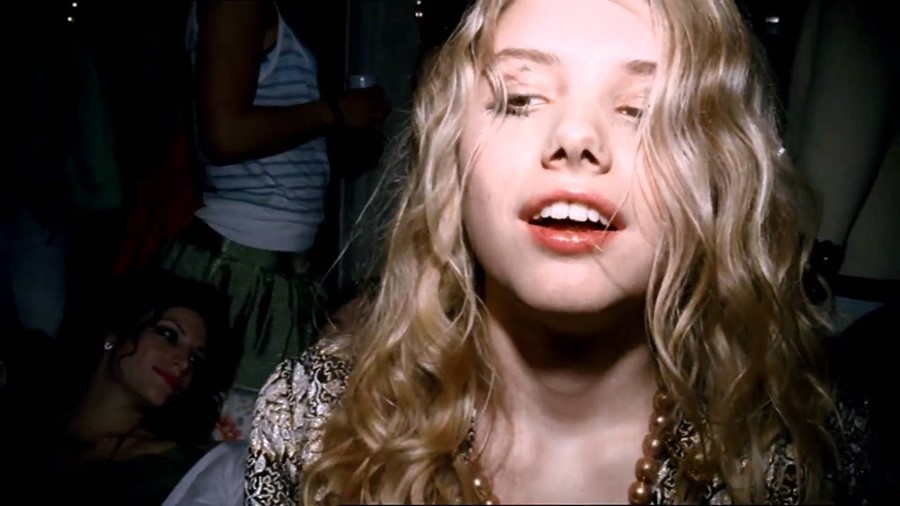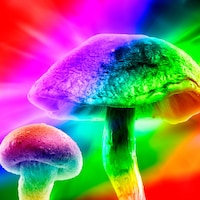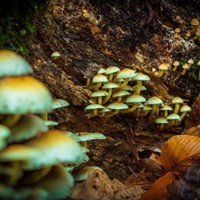Hallucinogen use among Gen Z has spiked since the pandemic and is showing no signs of slowing down
From the microdosing boom to ketamine therapy, hallucinogens have experienced a boom in the last five years. During the COVID-19 lockdowns, research found that young people had been using psychedelics in place of drinking alcohol, with one in five experimenting with microdosing. It made sense that hallucinogens – which are often seen as ‘unsociable’ drugs – would have their moment in the sun at a time when pubs and clubs were closed and house parties resulted in £10,000 fines. But use of hallucinogens, which includes drugs such as LSD, magic mushrooms, 2C-B, DMT and ketamine, has only continued to increase since the pandemic, overtaking MDMA and ecstasy in the league table of most-used drugs. So what’s driving the trend?
It would be simple to suggest that the increase in hallucinogen use is a byproduct of young people staying at home. Research last year suggested that Gen Z was cutting back on clubbing in the face of the cost of living crisis, and one newspaper recently dubbed today’s youngsters “generation stay at home”. However, the majority of people who Dazed spoke to for this article say they use hallucinogens at raves, which suggests that it’s not that young people have stopped partying altogether, but instead that they’re partying differently.
For Becky, a 24-year-old student support worker living in Manchester, the switch from MDMA to 2C-B, a synthetic psychedelic drug which offers a mix of hallucinogenic and stimulant-like effects, was a no-brainer. “MDMA can make it hard to be around busy places, and actually makes me feel less sociable than 2C-B,” she tells Dazed. “But 2C-B makes music, lights and people more palatable and warmer.” She now uses 2C-B at every rave she goes to, which is about ten times a year. “I don’t do MDMA often at all now. I don’t enjoy it anymore, it just makes me anxious and stressed,” she adds.
Others find that hallucinogens often cause less intense comedowns compared to other substances like stimulants and alcohol. Charlie*, a 21-year-old barista from Manchester, tells us: “I used to dabble with MDMA, but I find that the effects of hallucinogens and the lack of a comedown is much less harmful to me and my mental health.” Billie* from Leicester uses hallucinogens in place of alcohol as, like many Gen Z, they have chosen to stop drinking. “Hallucinogens mean I can have a good time on a night out without the hangover the next day,” they tells Dazed. Meanwhile, Manchester-based Ricky*, 25, has also recently replaced alcohol with ketamine, and says he hasn’t looked back.
The idea of ketamine being used as a club drug has been a controversial topic of late. Last year, Manchester-based DJ salute claimed on Twitter that there is “far too much ket” on UK dancefloors. But while it’s true that ketamine use is at its highest since records began in 2006, Ricky refutes the idea that ketamine is killing the dance floor. “I’m very social when I’ve had K,” he says. “I’ve heard people saying it’s turning the scene into zombies, but I’m more up and dancing having a good time”. Ketamine is a dissociative drug, and in high doses can render people unresponsive, hence the comparison to zombies. But, in lower doses, ketamine can enhance music and have an energising effect, making it a pretty fun club drug.
Ricky tends to take ketamine in place of alcohol at “normal clubs”, which he goes to at least once a week. “[The day after using ket], I don’t feel like I went out like you do with alcohol or any other drug,” he tells Dazed. “I wake up fresh as a daisy as long as I get enough sleep.” He also finds ketamine easier to regulate than other substances. “With ket, you don’t need to be fucked [up] for hours like if you are if you take a pill,” he says. “You can just keep topping up whenever you please, because it only lasts about 15 to 30 minutes.” Not only that, but ketamine, which costs between £20 and £30 for a gram, is much cheaper than other substances, particularly alcohol or cocaine. “It’s very cheap for how long it lasts,” says Ricky. “One bag [a gram] could easily do you two or three different nights out.”
According to harm reduction expert and director of the drug policy website Volteface, Paul North, it makes sense that people would turn to hallucinogens for partying, especially with dealers now offering much more variety. “The drug market has really opened up for young people, especially since just before the pandemic,” he tells Dazed. “Dealers have broadened their menus – those who sell weed will also likely sell LSD and mushrooms. They sell pretty much anything.” Plus, the way drug markets have shifted, with Telegram and the Dark Web making drugs much easier to procure, means there are a lot more options available to anyone looking to try different types of drugs.
“Socially and culturally, we are seeing more research around hallucinogens and psychedelic-assisted therapy, and about the positive effects these drugs could have on someone’s life” – Paul North
“From a harm reduction perspective, when we look at someone taking mushrooms versus MDMA, the latter is really strong and the comedowns that people get from using those drugs are strong,” North continues. “While hallucinogens don’t come without any after effects, they’re way less strong than other stimulants. With hallucinogens becoming more available, it makes sense that people would make the switch.”
North also believes there is more to the hallucinogen boom than less intense comedowns. He attributes it to a shift in attitudes towards these drugs, which are increasingly being touted as “more healing than they are harmful” (it’s worth caveating, of course, that the reality is more complex than this). “Socially and culturally, we are seeing more research around hallucinogens and psychedelic-assisted therapy, and about the positive effects these drugs could have on someone’s life,” he says. “Those sorts of narratives do cut through to young people, particularly those who are heavily engaged on social media and also interested in drugs.”
Alex, 24, a factory worker from St Helens, mainly uses hallucinogens for self-development purposes. He has tried mushrooms, LSD, DMT, 2-CB and ketamine, and much prefers them to other drugs. “Other than weed, I have never been a big user of drugs,” he tells Dazed. “I think all drugs have their time and place — taking trips at a sweaty rave can be a bit much, and taking coke or smoking and drinking are definitely more appropriate for certain events, but I don’t do that as much.” He tends to take hallucinogens at home or at friends’ houses, where he feels comfortable.
While he first tried psychedelics for “fun and recreation,” it wasn’t long before Alex “realised the true potential of trips,” including self-development, stronger bonds with friends and introspection. “You could say I became a little obsessed,” he tells Dazed. While some people use drugs and psychedelics mainly for escapism, Alex has never done this. “For me, I find they do the exact opposite [of allowing me to escape my problems],” he says. “They make you think about your life and situation more than you would sober, and that’s always been the case for me, although I still do use low doses of certain psychedelics for fun nowadays.”
In social settings, John*, 20, from Manchester, prefers to use alcohol and weed more than hallucinogens as they are “not as debilitating and act as social lubricants,” and he still uses ecstasy at raves. However, he has taken LSD and mushrooms at home and in nature with friends and gained some genuinely positive benefits from doing so, especially when setting intentions before tripping. “Shrooms helped me become more empathetic,” he tells Dazed. “They made me reflect on my actions and past behaviours and want to improve upon them. My experiences with psychedelics have been varied and different each time, ranging from euphoric to deeply unsettling but, however scary my experiences may have been at times, I’ve always felt like I came out of the experience better off.”
While psychedelics have previously been the subject of frightening urban legends – like the story of the man who permanently believed he had transformed into a glass of OJ – they are currently undergoing a serious destigmatisation. As interest in the benefits of psychedelics grow, and substances become more available to those who like to dabble in mind-altering mischief, it’s no surprise they’re overtaking more traditional drugs like MDMA. And, as Alex says, who doesn’t want to “explore the infinite horizons of your mind, and the universe that exists within the unimaginable imagination”?
*Names have been changed




